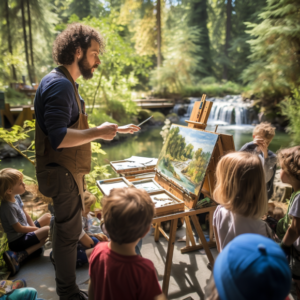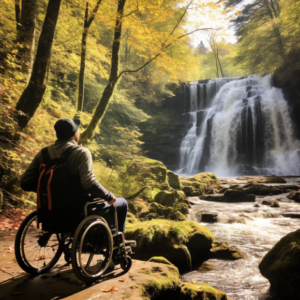As an avid hiker and waterfall enthusiast, I have been fortunate to witness the breathtaking beauty of cascading waterfalls in various locations. Photographing waterfalls can be a truly rewarding experience, allowing us to freeze these dynamic and mesmerizing moments in time. In this comprehensive article, we will explore essential tips and techniques for capturing the beauty of waterfalls through photography. Join me as we delve into the world of waterfall photography and discover how to create stunning images that showcase the awe-inspiring power and serenity of these natural wonders.
- Understanding the Essence of Waterfalls
To capture the true essence of waterfalls in your photographs, it is essential to understand their characteristics and the elements that contribute to their beauty. We will discuss the importance of composition, lighting, and the unique qualities of moving water. Understanding these factors will help you convey the dynamism, texture, and sense of serenity that make waterfall photography so captivating.
- Gear and Equipment
The right gear plays a significant role in waterfall photography. We will explore essential equipment, including cameras, lenses, tripods, and filters. Understanding how each piece of equipment contributes to capturing the beauty of waterfalls will allow you to make informed decisions and create stunning images.
- Finding the Perfect Location
Choosing the right location is crucial for successful waterfall photography. We will discuss various factors to consider, such as the size and height of the waterfall, accessibility, surrounding landscapes, and the presence of interesting foreground or background elements. Additionally, we will explore popular waterfall destinations worldwide that offer captivating opportunities for photography.
- Composition Techniques
Composition is key to creating visually appealing waterfall images. We will delve into essential composition techniques, such as the rule of thirds, leading lines, framing, and using foreground interest to create depth and visual interest. By applying these techniques, you can enhance the impact and storytelling ability of your waterfall photographs.
- Mastering Exposure and Shutter Speed
Achieving the right exposure and capturing the motion of water is crucial in waterfall photography. We will discuss techniques for metering, using the histogram, and making adjustments to achieve a well-exposed image. Additionally, we will explore the creative possibilities of different shutter speeds to capture silky smooth or dynamic, frozen water effects.
- Working with Light
Lighting conditions greatly influence the mood and visual impact of waterfall photographs. We will discuss the optimal times of day for shooting waterfalls and techniques for working with natural light. Additionally, we will explore the creative possibilities of backlighting, sidelighting, and diffused light to add drama and enhance the overall appeal of your images.
- Post-Processing Techniques
Post-processing is an essential part of creating stunning waterfall images. We will explore techniques for enhancing colors, adjusting contrast and sharpness, reducing noise, and creating a sense of depth in your photographs. We will also discuss the importance of maintaining a natural look and avoiding over-processing.
Conclusion
Waterfall photography is a captivating and rewarding pursuit that allows us to capture the beauty and essence of these mesmerizing natural wonders. By understanding the unique qualities of waterfalls, selecting the right gear, mastering composition techniques, and working with light and exposure, you can create stunning images that showcase the awe-inspiring power and serenity of cascading water. Remember to experiment, be patient, and immerse yourself in the magic of waterfall photography.



